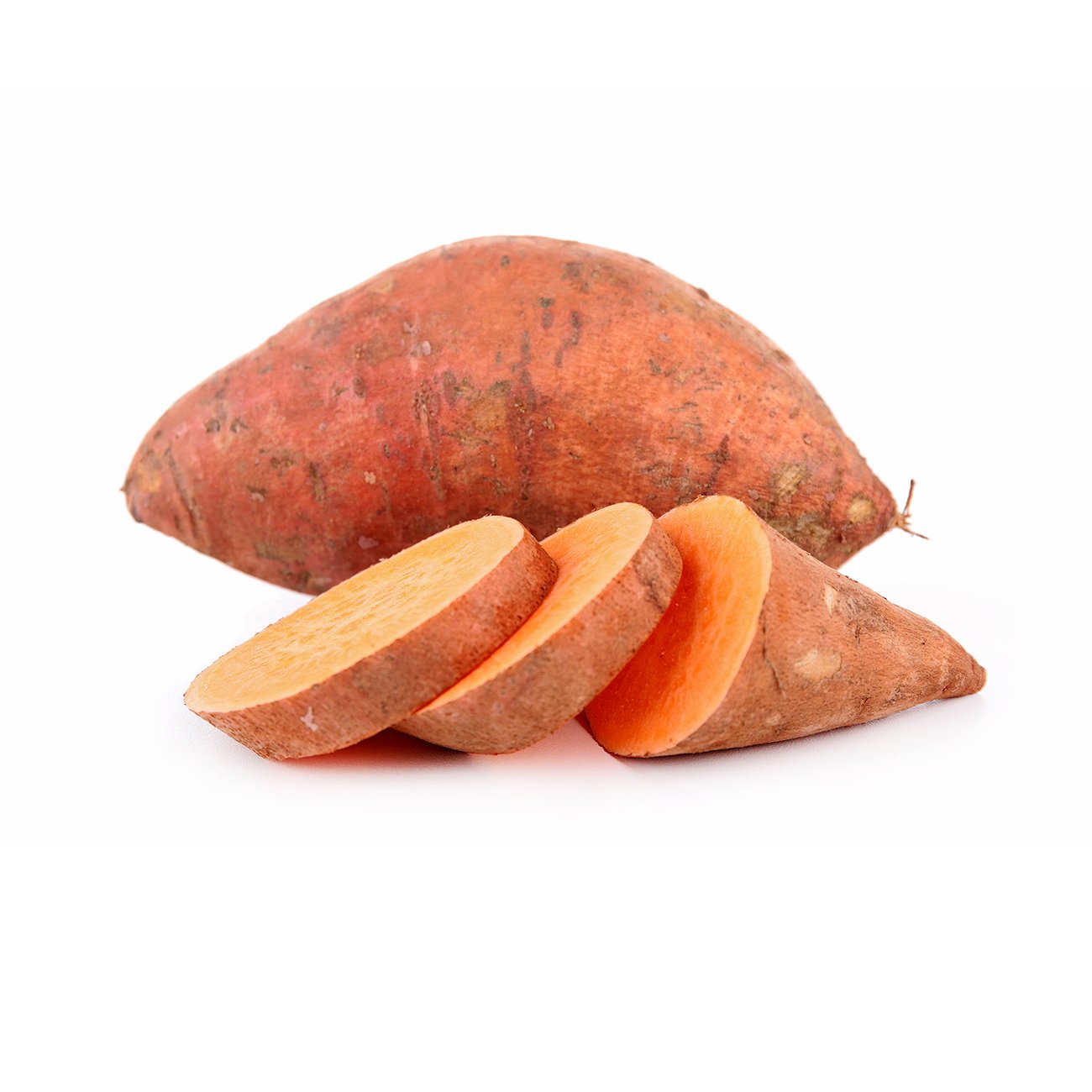Sweet potato
The most used flavouring vegetable in the world.
Alternative Name
Batata, kumara
Scientific Name
Ipomea batatas
Health benefits
Onions come in various shapes and colours, the most common being round to oval-shaped and slightly smaller than a tennis ball. Onions are a bulb. Various colours are available, including white, brown, red and yellow, which have corresponding differences in flavour and use.
-
Harvesting
Sweet potatoes are harvested when roots have reached the desirable size. Irrigation is typically stopped 2–3 weeks before harvest so that vines begin drying before they are removed and roots are harvested. Good quality sweet potatoes should be smooth and firm, with uniform shape and size, be free from mechanical damage, and have a uniform peel colour typical of the variety. The periderm of sweet potato roots is easily damaged during harvest and handling, and this leads to an unsightly appearance, high rates of water loss, and increased susceptibility to decay. The process of curing the damaged skin or 'wound healing' can be achieved by holding roots at 25–32°C under high relative humidity (>90 to 100%) for several days to 1 week.Postharvest storage temperature
The recommended conditions for commercial storage are to keep roots cool and dry. The roots are chilling sensitive and should be stored at 12.5°C–15°C with high relative humidity (>90%). A storage life of 6–10 months can be expected under these conditions, although sprouting may begin to occur after about 6 months. Temperatures above 15°C lead to more rapid sprouting and weight loss.Controlled atmosphere storage
There is no commercial use of controlled atmospheres for sweet potato storage. Respiration rates of roots are reduced as oxygen is lowered from 21% to 3%. Oxygen concentrations below 3% may results in increased respiration rates due to fermentative metabolism. Response of roots to increased carbon dioxide levels is not known.Ethylene sensitivity
Sweet potato roots produce very low amounts of ethylene, although much higher rates can occur after chilling, wounding and decay development. Exposure to ethylene increases respiration rates and phenolic metabolism, adversely affecting flavour and colour of cooked roots.Humidity storage
Sweet potato should be stored at >95% relative humidity for long-term storage and 70–90% relative humidity for short-term handling for marketing.Disease & infection
Chilling and mechanical injury predispose sweet potatoes to decay, especially rhizopus soft rot. Postharvest fungicides may be applied to reduce the risk of relative humidityizopus after handling for marketing. There are numerous other decay-causing fungi including black rot and fusarium rot. Seed piece treatment and postharvest curing are the main control measures for these organisms. In warm wet production conditions, bacterial rots can also cause postharvest losses. -
Peel before use. Keep in cool, dark cupboard.
Nutrition information
| Qty per serve | % RDI per serve | Qty per 100g | |
|---|---|---|---|
| Energy | 223 kJ | 3% | 297 kJ |
| Protein | 1.4 g | 3% | 1.9 g |
| Fat, total | 0.1 g | 0% | 0.1 g |
| – saturated | 0 g | 0% | 0.0 g |
| Carbohydrate | 10.6 g | 3% | 14.1 g |
| – sugars | 4.2 g | 5% | 5.6 g |
| Dietary fibre, total | 2.3 g | 8% | 3 g |
| Sodium | 8 mg | 0% | 10 mg |
| Pantothenic acid | 0.6 mg | 12% ESADDI | 0.8 mg |
| Vitamin A (from carotenoids) | 847 µg RE | 113% RDI | 1129 µg RE |
| Vitamin B6 | 0.16 mg | 10% RDI | 0.21 mg |
| Vitamin C | 23 mg | 58% RDI | 31 mg |
Note: % RDI are based on an average adult diet of 8700 kJ. Your daily intakes may be higher or lower depending on your energy needs. RDI = Recommended Dietary Intake; ESADDI = Estimated Safe and Adequate Daily Dietary Intake.

You might also like
Veggy tip
You don't necessarily need to peel sweet potato, but be sure to give them a good wash. It is generally eaten cooked—try slicing, drizzling with olive oil and herbs then baking.



